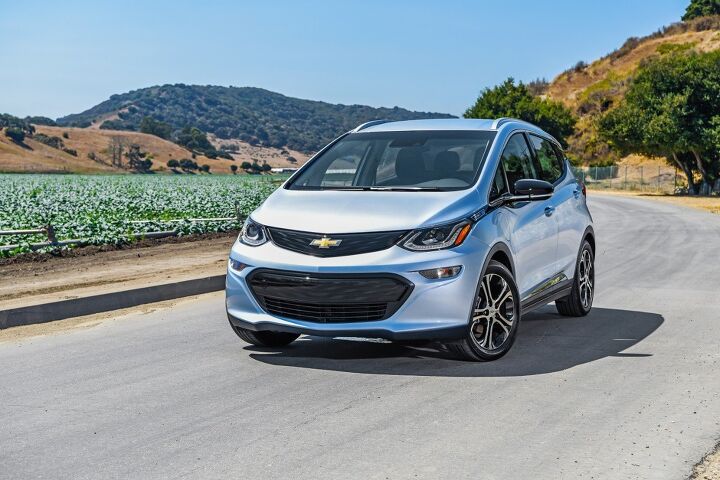GM Product Boss Says Company Will Turn a Profit From EVs; Doesn't Know When

Profitability is right around the corner, but so far the sign marking the turn isn’t in sight. That seems to be the gist of comments made by Mark Reuss, General Motors’ executive vice president for product development, who recently claimed his company would be the first automaker to turn a profit selling cheaper electric vehicles.
Right now, the high cost of producing EVs makes it a money-losing proposition for automakers struggling to find an edge in the growing technology war. While Tesla might disagree with Reuss’ insinuation, the dedicated electric automaker has only ever posted a couple of slim quarterly profits, with revenue from its pricey EVs eaten up by expenditures elsewhere.
At a company like GM, piles of truck and SUV-generated cash allows for a model like the Chevrolet Bolt — a low-priced EV that beats the competition in range, but allegedly drains $8,000 to $9,000 from the company with each unit sold. That’s all going to change, said Reuss.
“That’s the mantra inside product development. That’s what all our engineers are all working toward,” Reuss told reporters at the reopening of the historic Durant-Dort Factory One in Flint, Michigan.
The automaker plans to seek EV profitability in two ways. First, by removing all the weight it can from the vehicle, reducing the number of battery cells needed to move the car. Secondly, by increasing production, thus lowering the cost of its in-house battery and motor technology. GM has a goal of selling 10 electrified models in EV-hungry China by 2020.
“We know the customers would like to drive electric cars but are unwilling to pay any more for them,” said Reuss. “That’s why we’re going to be the first company to sell electric vehicles that people can afford at a profit.”
Already, the Bolt sells in Europe under the Opel Ampera-e name, while the range-entended Chevrolet Volt has undergone a Buick makeover for Chinese customers. While the number of electrified GM products is on the rise, Reuss still wouldn’t chance a guess as to when the company might turn a profit on its EVs.
[Source: The Detroit Bureau] [Image: General Motors]

More by Steph Willems
Latest Car Reviews
Read moreLatest Product Reviews
Read moreRecent Comments
- Jeff Self driving cars are not ready for prime time.
- Lichtronamo Watch as the non-us based automakers shift more production to Mexico in the future.
- 28-Cars-Later " Electrek recently dug around in Tesla’s online parts catalog and found that the windshield costs a whopping $1,900 to replace.To be fair, that’s around what a Mercedes S-Class or Rivian windshield costs, but the Tesla’s glass is unique because of its shape. It’s also worth noting that most insurance plans have glass replacement options that can make the repair a low- or zero-cost issue. "Now I understand why my insurance is so high despite no claims for years and about 7,500 annual miles between three cars.
- AMcA My theory is that that when the Big 3 gave away the store to the UAW in the last contract, there was a side deal in which the UAW promised to go after the non-organized transplant plants. Even the UAW understands that if the wage differential gets too high it's gonna kill the golden goose.
- MKizzy Why else does range matter? Because in the EV advocate's dream scenario of a post-ICE future, the average multi-car household will find itself with more EVs in their garages and driveways than places to plug them in or the capacity to charge then all at once without significant electrical upgrades. Unless each vehicle has enough range to allow for multiple days without plugging in, fighting over charging access in multi-EV households will be right up there with finances for causes of domestic strife.


































Comments
Join the conversation
GM can't meet demand in Norway: 4000 Opel Ampera-e have been sold before the car has been officially shown. Order one today, and you'll receive it in the fall of 2018...when it's certainly not fresh anymore.
GM might to better to follow VW's plan: make a platform that can take any powertrain, and then sell the same car with whichever powertrain people want. That way you can use economies of scale, not shoddy interior plastics, to get costs down. Taking weight out is a good idea. But aluminum is a little expensive and a little tricky to work with, and carbon fiber is a lot expensive and a lot tricky to work with. (Witness the BMW i3, which doesn't really do anything better than the Fiat 500e but leases for four or five times the monthly payment, because...carbon fiber?)